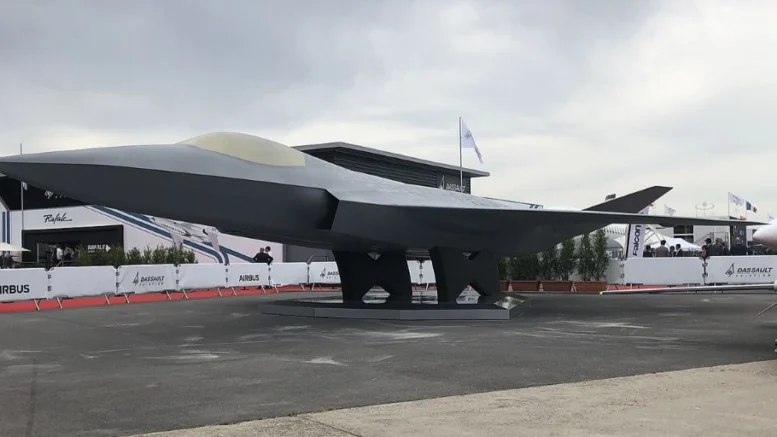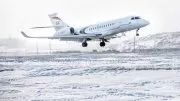The SCAF project is supposed to produce the new spearhead of Europe’s air forces. Today, it sits at the heart of sharp tensions, notably between France and Germany. Launched in 2017, it aims to create a sixth-generation combat aircraft and a connected defence system by 2040. However, rivalries between Dassault (France) and Airbus (Germany/Spain) are slowing the programme. These disagreements concern workshare, intellectual property and technical leadership. While a first prototype is planned for 2026, negotiations are at an impasse, with each country threatening to go it alone.
The Future Combat Air System (SCAF/FCAS) was launched in 2017 by France and Germany, later joined by Spain in 2019. The goal at the time was to strengthen Europe’s strategic autonomy in the defence sector. Put simply, it is about replacing current combat aircraft—such as France’s Rafale and the German-Spanish Eurofighter—with a new-generation aircraft : the New Generation Fighter, targeted for 2040–2045. The project, much broader than a single combat aircraft, also includes swarms of escort drones, satellites and a centralised information system, together forming a connected combat network. It is therefore a major industrial project, but also a strong political statement of Europe’s intention to carry weight on the international defence scene in the face of the United States, China and Russia. On this point, Florence Parly, then Minister of the Armed Forces, stated on 20 February 2020 that SCAF “is an industrial cooperation project, but also a political project because it illustrates our will and our ambition for Europe of defence.”
The war of the aerospace giants
To carry out this project, estimated at between €80 and €100 billion, two big aerospace names were designated as lead contractors: Dassault Aviation for France on one side, and the German and Spanish branches of Airbus on the other. Dozens of other companies, such as Thales and Safran, are also involved amid a myriad of subcontractors. The division of tasks between them was supposed to be equitable: one third for Dassault, one third for Airbus Germany and one third for Airbus Spain. However, this distribution has been a source of tension from the outset.
On one side, Dassault—drawing on its experience designing combat aircraft such as the Rafale—wants to keep full control over the aircraft’s design. « We know how to do it from A to Z, we have the skills, » explained Éric Trappier, the CEO of Dassault, on 23 September 2025 in Cergy-Pontoise in front of the cameras. For its part, Airbus is calling for a more balanced split, explaining that not all countries bring the same know-how. France is one of the only European countries able to design an aircraft from A to Z, whereas Germany’s experience is more distributed, notably with the Eurofighter programme.
Beyond workshare, intellectual property is another sticking point. Dassault refuses to give ground on technologies developed over decades, fearing this could lead to « industrial pillaging. » This is notably the case for flight-control systems. In this vein, France, alongside Dassault, wants to protect its family-owned know-how, accumulated by the airframer over more than 70 years. The Germans believe France cannot succeed without their participation and stress that technology sharing will be necessary.
These disagreements have already caused delays. In 2022, Spanish Defence Minister Margarita Robles expressed concern about the project’s slowness, saying that « the SCAF project is in a stalemate. » Today, as Phase 2 of the project—including the flight of a first demonstrator—is slated for 2026, tensions are mounting. Dassault Aviation no longer hesitates to voice its irritation publicly, asserting that they know how to deliver and simply ask to be able to lead the programme: « We ask just one thing, a small thing. Give us the ability to drive the programme; that is, in terms of governance, I will not accept that there are three of us around the table deciding all the technical work that needs to be done to make an aircraft fly. » Éric Trappier reiterated.
Toward an inevitable European divorce ?
Faced with this deadlock, Germany is beginning to consider other options. Berlin could seek to collaborate with Sweden or the United Kingdom, or even continue the project solely with Spain. France, for its part, has stated through its officials that it is prepared to develop its own combat aircraft if talks with Berlin and Madrid fail. This stance aligns with that of Dassault Aviation, which suggests that collaboration with other partners, such as the United Arab Emirates, could offer more freedom of action and clearer leadership, potentially resulting in a more refined and less costly aircraft.
Despite these differences, Germany reaffirmed on 18 September its desire to see the project succeed, through German Chancellor Friedrich Merz, who said he « wants to find a solution as quickly as possible (…) it can’t go on like this. » The German chancellor stressed that the three countries need this project and that a solution must be found quickly. For its part, France’s Ministry of the Armed Forces says it is aiming for a « mutually acceptable » agreement by the end of the year.
SCAF, a symbol of European ambition, illustrates the challenges of European cooperation in defence. Yet political speeches do not seem to move at the same tempo as industrial realities—evidenced by the postponement of the trilateral meeting on 10 October 2025, which further fuels doubts about the timetable and the project more broadly.









Be the first to comment on "SCAF: Stop or Go?"